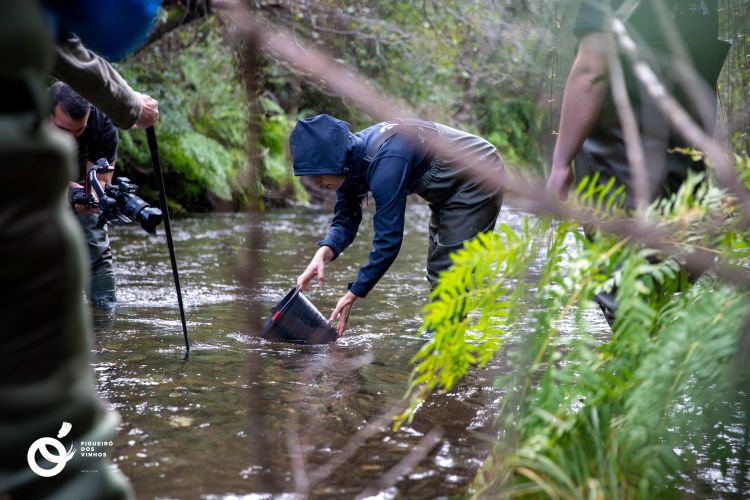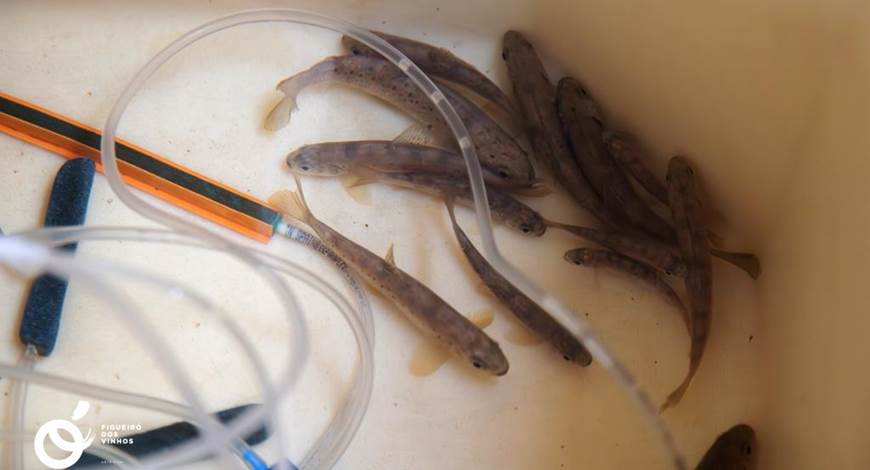The first wild trout raised in Figueiró dos Vinhos were released into the Alge stream
Last October, the first wild trout raised at the Campelo Aquaculture Centre in Figueiró dos Vinhos were released. This release, which took place in the Alge stream, a tributary of the River Zêzere, is part of the ‘CRER - Adaptation of the Campelo Aquaculture Centre for Experimental Rearing of Wild Trout’ project, which has the technical support of MARE. 
The aim of this pilot project is to experimentally rear wild trout in adapted ponds at the Campelo Aquaculture Station, which simulate the species' natural habitat and behaviour. The trout are fed live food and have minimal human contact, with the aim of sustainably restocking the watercourses where the species occurs naturally, without jeopardising the local genetic heritage.
Carlos Alexandre, a researcher at MARE and one of those responsible for the project's technical and scientific component, explained that despite some challenges during production, which led to the number of trout released this year not reaching a hundred, these animals have a ‘greater chance of survival’ because they were produced in conditions very close to what they will find in the wild. ‘What we think, and we're validating this with our more scientific experiments, is that when these animals arrive in the wild they are fewer, but they have a greater chance of survival. It's in this sense that this release and these animals that are being produced in Campelo at the moment are important. We can take this as a paradigm shift in what repopulation actions are and the promotion of their success,’ Carlos Alexandre told Lusa.

In order to evaluate the success of this action and to be able to monitor it, the trout were duly marked with a chip. In this way, ‘once the animal has been recaptured’, it is possible to ‘identify exactly that individual, where it comes from, how long it was when it was released, how much it has grown, where it has moved’.
Carlos Alexandre also said that the ‘breeding stock has been reinforced with animals from’ that stream, which will reach sexual maturity in the coming months. ‘What follows is a new cycle of spawning and production of these trout, which will then be released again in September, October and, we hope, in a much larger number.’ The MARE researcher explained that ‘once the procedure has been optimised and this new trout production process has been validated, the aim is to transform the Campelo Aquaculture Station into a true rehabilitation centre for river ecosystems’.
According to Carlos Alexandre, the project's ambition is to maintain trout production and extend these release actions to other river basins with smaller populations. This work could also be extended to other endangered species such as salmon, which need restocking. The municipality of Figueiró dos Vinhos also intends to create a Centre for the Rehabilitation of Riverine Ecosystems to promote and disseminate the work carried out in this project.
Photographs by the Figueiró dos Vinhos Municipality
